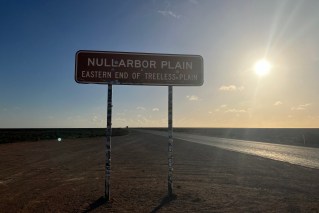Secrets and lies: Why cabinet documents are no less boring today than 30 years ago
The Queensland Government plans to release Cabinet papers after 30 days instead of 30 years. Don’t expect to learn too many state secrets writes Robert MacDonald.


Former Premier Sir Joh Bjelke-Petersen. (ABC photo)
One of my more boring jobs in journalism was spending a few days each December skimming through thousands of pages of old State Cabinet papers looking for stories.
It was an annual ritual. Late each year, journalists would be invited to the State Archives at Runcorn and handed a boxful of microfiche rolls containing all the 30-year-old Cabinet material to be publicly released to on the first day of the following year.
I only did it for a few years a decade or so ago, while working for The Courier-Mail.
At first, it was exciting, being handed this tantalising box of secrets locked away for three decades. What great mysteries could it hold?
The answer, you learned quickly enough, was almost none.
After hours of scrolling, two things became clear.
The first was that most cabinet deliberations are incredibly boring and procedural, approving appointments and new allowance schedules for regional workers, that sort of thing.
The second was all the juicy stuff had already become public years before, either released by the government of the day or deliberately leaked to journalists.
You’d occasionally find the odd juicy tidbit, but nothing that rewrote history, simply reinforced it with some occasional colour.
In the Cabinet papers for 1983 I found plenty of examples of the Joh Bjelke-Petersen government’s seemingly endless efforts to keep the Commonwealth out of state affairs – from aboriginal affairs to industrial relations.
Nothing new in that. Fighting with the feds was one of Joh’s golden rules for being a successful premier.
But I did find a submission from State Aboriginal and Island Affairs Minister Val Bird, which gave a real flavour of the times.
Bird was explaining why Queensland needed to keep rejecting the Commonwealth’s attempts to get involved in the state’s aboriginal affairs policies and offered this explanation:
“We have maintained this position because of State expertise in aboriginal and islander social issues, developed through legislation since the latter 19th century and which, since then, has progressively improved the position of aborigines, directed towards integration as Queenslanders and Australians.”
In contrast, he continued, the Commonwealth’s policies were “lopsided and an attempt to place aborigines in a most preferred position”.
To make things worse, the Federal Government had recruited many of its advisers from “political anthropologists, motivated in the direction of academic research, philosophically committed to territorial separation of the aboriginal land areas and a progressive return to tribal lifestyle”.
Jarring stuff perhaps when viewed from today, but nothing we didn’t already know about the Bjelke-Petersen government at the time.
All of which is to say it’s hard to see how the Queensland Government’s decision to release its Cabinet deliberations within 30 days instead of 30 years – as recommended by Professor Peter Coaldrake in his recent review of culture and accountability in the public service – can possibly be a bad thing.
Any ministers and public servants concerned that releasing cabinet documents within days instead of months would be like throwing chum to a media shark pack, shouldn’t worry.
I know from experience that reading cabinet papers, admittedly from 30 years before, quickly dulls the mind.
In fact, I think the big danger ministers might face is being accused of not doing much at all once the inner workings of cabinet are exposed.
As for the argument that early release would restrict robust cabinet room debate, I found no evidence of it in the old Cabinet papers from even the most tumultuous of the Bjelke-Petersen years.
The closest I came across were entries along the lines of “following a verbal submission from the Premier, Cabinet agreed that…”
And concerns that an early release program might tip the Government’s hand on important state and commercial decisions can presumably be overcome by adopting and adapting the New Zealand model, which requires all proposed releases of material undergo a due diligence process.
A range of matters are considered, such as privacy obligations, national security, potential liability, such as defamation or breach of contract, and any sensitivities around timing.
The policy also provides that when information is redacted, the reasons should be clearly stated.
In any event, as Coaldrake says in his report, “The proactive release of Cabinet documents would be an important signal, from the very top, of an open and pro-disclosure culture”.
Whatever the arguments for and against, the new 30-day rule could well be law within a month or so.
Premier Palaszczuk has said she hopes to introduce the enabling legislation to Parliament next month.
To that end, Justice Department Director-General David Mackie led a delegation to New Zealand last month to discuss with officials the details of its cabinet document release program.
At least it will mean no poor journalist will ever again have to spend their Decembers squirrelled away in the State Archives, scrolling through endless reams of Cabinet papers desperately looking for nuggets of old news.












